Fresh artichokes have a much more complex and interesting flavor than the canned variety. They take a lot of extra work, but it's worth the effort at least a couple of times during peak season.
Artichokes: how to prep, boil, steam, bake, roast, grill, and pressure cook
Jump to:
When are artichokes in season?
Artichokes have 2 peak seasons: March to June, and again from September to October. California artichokes are usually available all year, but better during their peak seasons. They are expensive, but are often on sale in spring when they are most abundant.
| Jan | Feb | Mar | Apr | May | Jun | Jul | Aug | Sep | Oct | Nov | Dec | |
|---|---|---|---|---|---|---|---|---|---|---|---|---|
| California Artichokes | x | x | x | x | x | x |
See what else is in season at the same time: March, April, May, June, September, and October.
Signs of a fresh artichoke
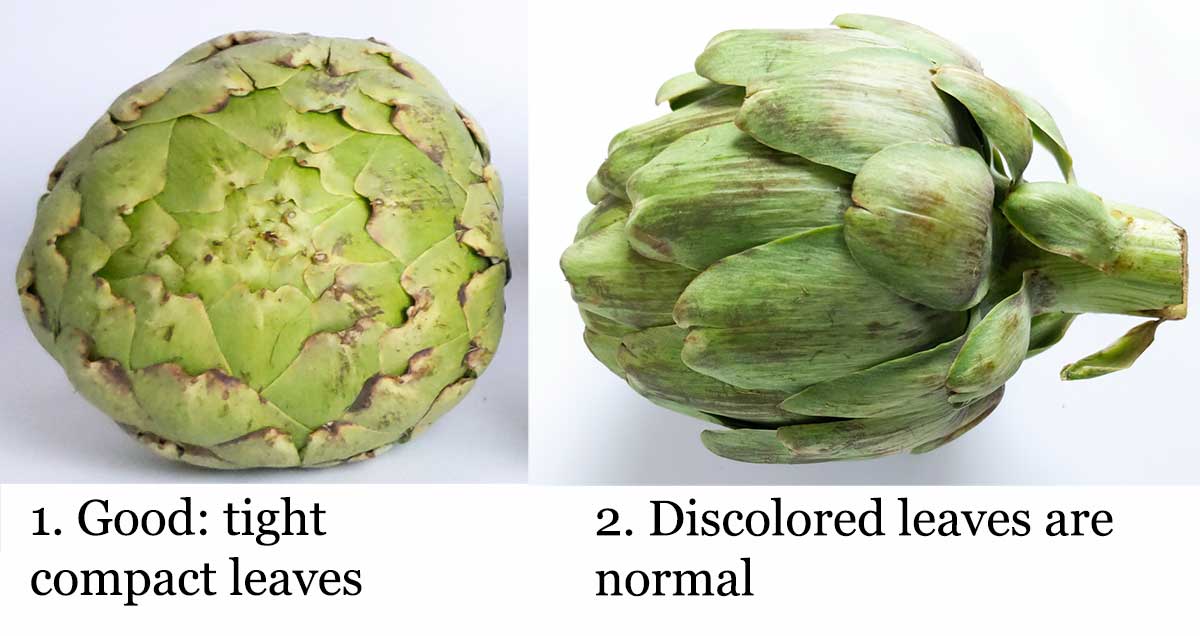
- Tight, compact leaves
- Discolored leaves are ok: that's a natural occurrence that starts when they come in contact with the air.
- When squeezed, the leaves squeak a little
- It is heavy for its size, a sign it has a lot of moisture and hasn't dried out
Signs of a bad artichoke
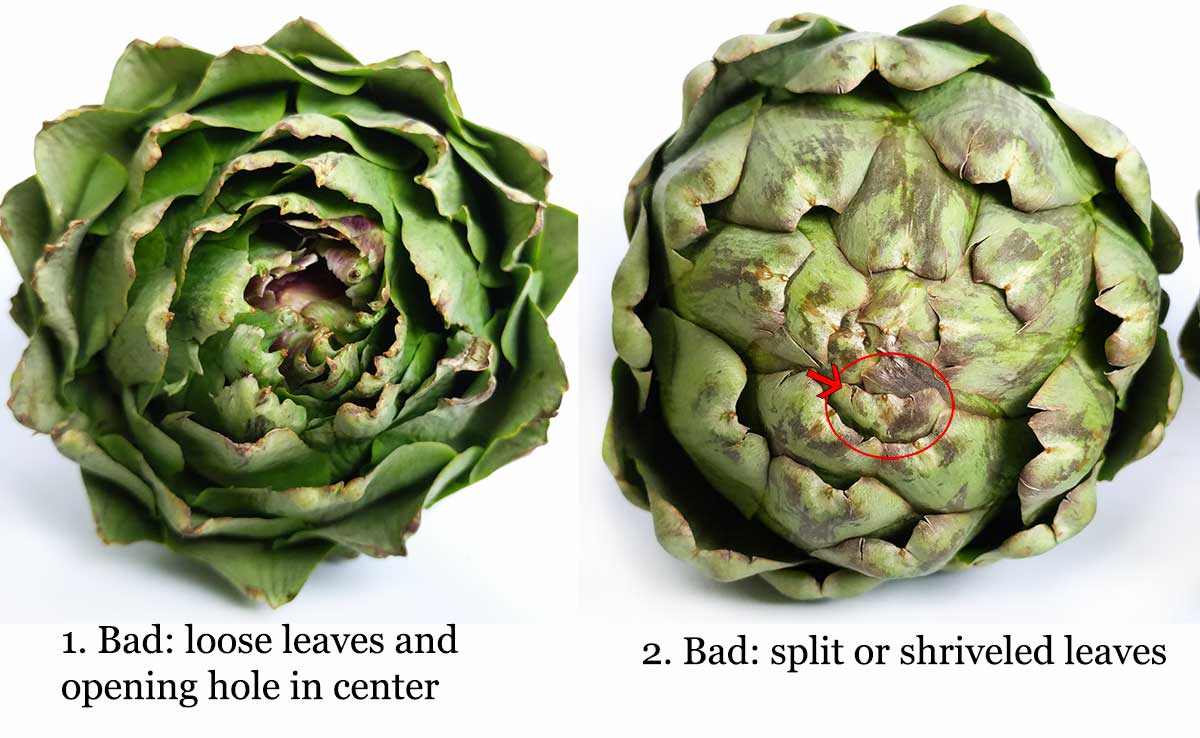
- There's an open hole in the center and the leaves are loose
- The tips of the leaves are split or shriveled, a sign it is dried out
- It feels light, another sign it has dried out
- It feels spongy when squeezed
How to store
Wrap each artichoke in a paper towel to absorb excess moisture (which can cause deterioration). Then store them in an airtight container in the fridge. They should last for about a week.
Cooked artichokes can be stored in an airtight container in the fridge for a few days.
What parts are edible?
If you are new to working with globe artichokes, they can be a bit confusing. I've found cutting them in half and looking at the different parts to be helpful.

- Heart: the entire heart is edible
- Outer leaves: the leaves are not edible, except for the flesh on the bottom where they connect to the heart
- Inner leaves: these have no edible flesh on the bottoms and therefore aren't edible. Some people say you can chew the entire leaf, but I haven't ever found that to be pleasant.
- Stem: the outer layer of the stem is usually stringy or tough, but the inner parts are edible and nearly indistinguishable from the heart.
- Choke: the choke has a feathery consistency that is not pleasant to chew and can also get stuck in your throat, causing choking. (Closeup of choke pictured below to show feathery / hairlike texture). The choke is not poisonous (but still not good to eat due to choking hazard).
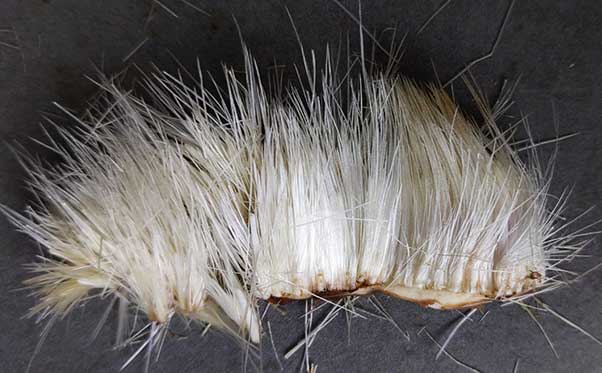
How to eat an artichoke
When presented with a whole (mature) artichoke for the first time, pretty much everyone wonders, "how am I supposed to eat this?" Watch Ocean Mist's 30-second video to demonstrate or visit Simply Recipes' guide, "How to cook & eat an artichoke."
How to prep
Prepping can take some time, depending on how you plan to use them.
How to prep artichokes
- Rinse & scrub
Scrub the outside of the artichoke to remove the bitter coating
- Trim the top & bottom
Trim the top ⅓ off (those parts of the leave are inedible (a serrated knife works better here than a chef's knife). Also trim off the bottom stem.
- Trim the thorns off leaf tips
If the leaves have long, sharp thorns, trim them. If not, skip this step.
- Refer to recipe for further prep
At this point, you might leave the artichoke whole, cut it in half, or using just the heart.
Cooking instructions
Artichokes can be cooking any number of ways. Whichever method you choose, the key is to not let the flesh dry out.
| Cooking method | Duration |
|---|---|
| Boil (whole) | 20-40 minutes |
| Steam (whole) | 35-60 minutes |
| Bake (whole) | 30-80 minutes + pre-steam |
| Roast (cut in half) | 25-35 minutes |
| Braise (cut in half) | 20-30 minutes |
| Grill (cut in half) | 3-7 minutes + pre-steam |
| Fried (small or hearts) | 5-10 minutes |
| Pressure cook (whole) | 5-20 minutes |
Recipes
Below are a handful of recipes from the Artichoke recipe collection with over 30 recipes and all 8 cooking methods listed above.

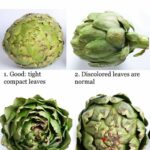
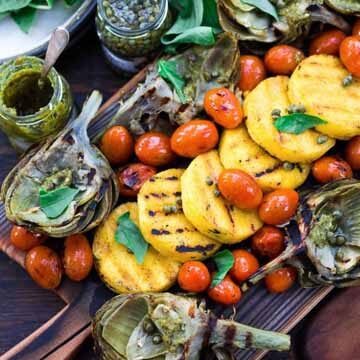
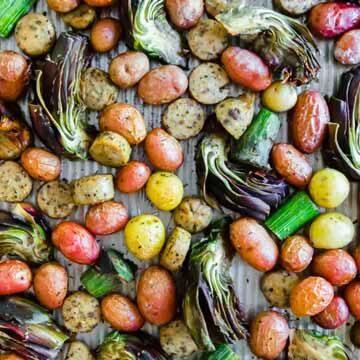
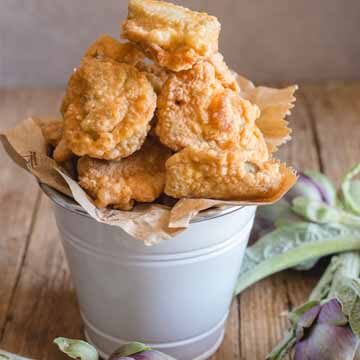
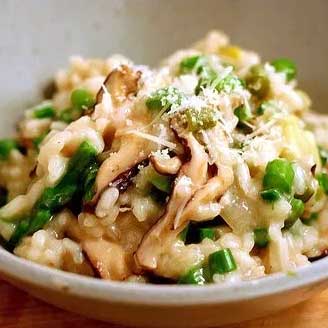
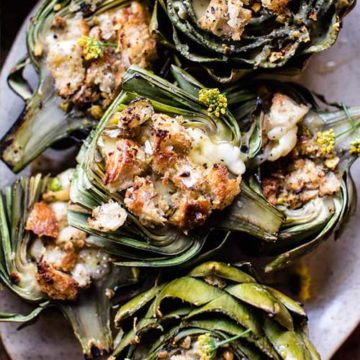

Louann says
For a real time saver. 30 min In pressure cooker. 😁. Perfect. Either just water & salt. Or can or veg. Stock.
Michele says
I bought three purple artichokes at my local Italian market. I have never cooked purple artichokes (they are not the baby ones). I am using an old family recipe for stuffed artichokes. I normally cook the stuffed artichokes in an inch or two of water and they are ready in 45 minutes to an hour. It’s over an hour and a half and these artichokes are still hard at the base of the leaf. Can I just keep cooking them until they soften? What’s up with these artichokes?
Vee says
I'd try to keep cooking them - it's possible they are bigger or have denser flesh? Another possibility is they are past their prime and the flesh is dried out. I'll try to get my hands on some full sized purple artichokes this season and see if I run into the same thing.
Chris says
Very much informative.
Appreciated
Oscar Acevedo says
I planted four artichokes plant , on 27 of september, the are big and beautifull, but they do not produce yet, What I done wrong, please help me out here. thanks
Vee says
Hmm, let's see if we can figure this out. What zone are you in? Also note that it's not uncommon for the plants to not produce artichokes the first year.
Steve Bluer says
What do Artichokes taste like
Nick Skriloff says
Where can I find artichoke flavoring? If I wanted to infuse a food with an artichoke flavor, how would you recommend I do it?
Vee says
This one almost stumped me, but after some persistent searching I was able to find a place that sells artichoke powder. I have never ordered from them or tried it, however. If you do, I would love to hear your thoughts to share with everyone here. https://www.myspicesage.com/products/artichoke-powder
Kathy says
I boiled 2 artichokes tonight and ate one. It's in the fridge in an air tight bowl. What's the best way to reheat it?
Vee says
I am so sorry I missed this. For future reference, I follow this guide: https://kitchenous.com/reheat-artichoke/